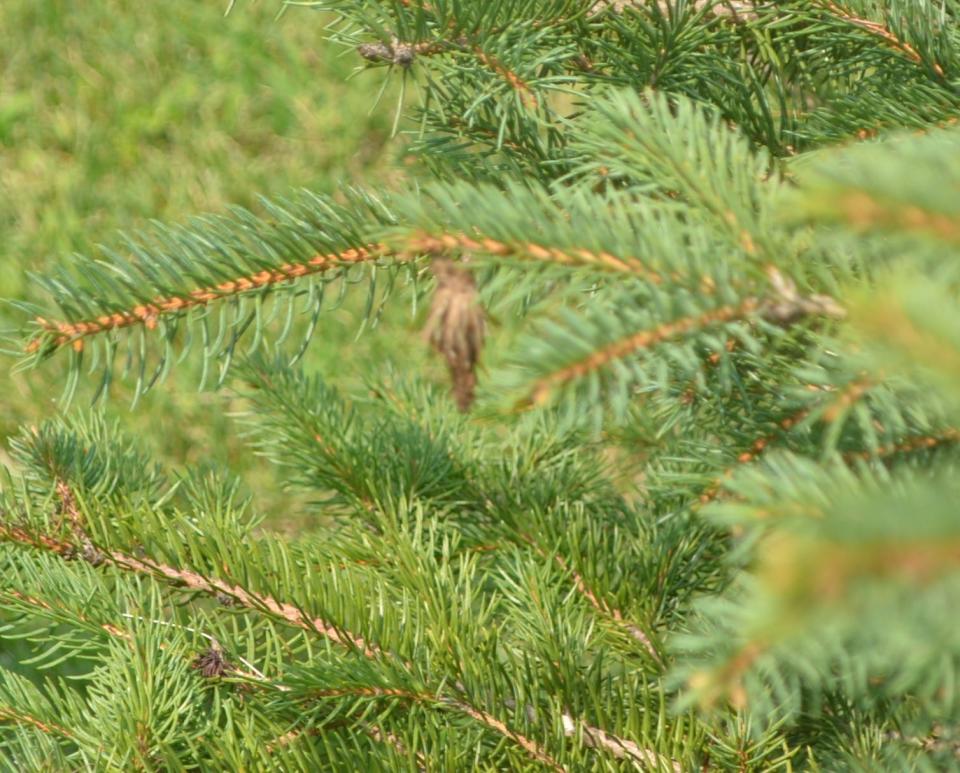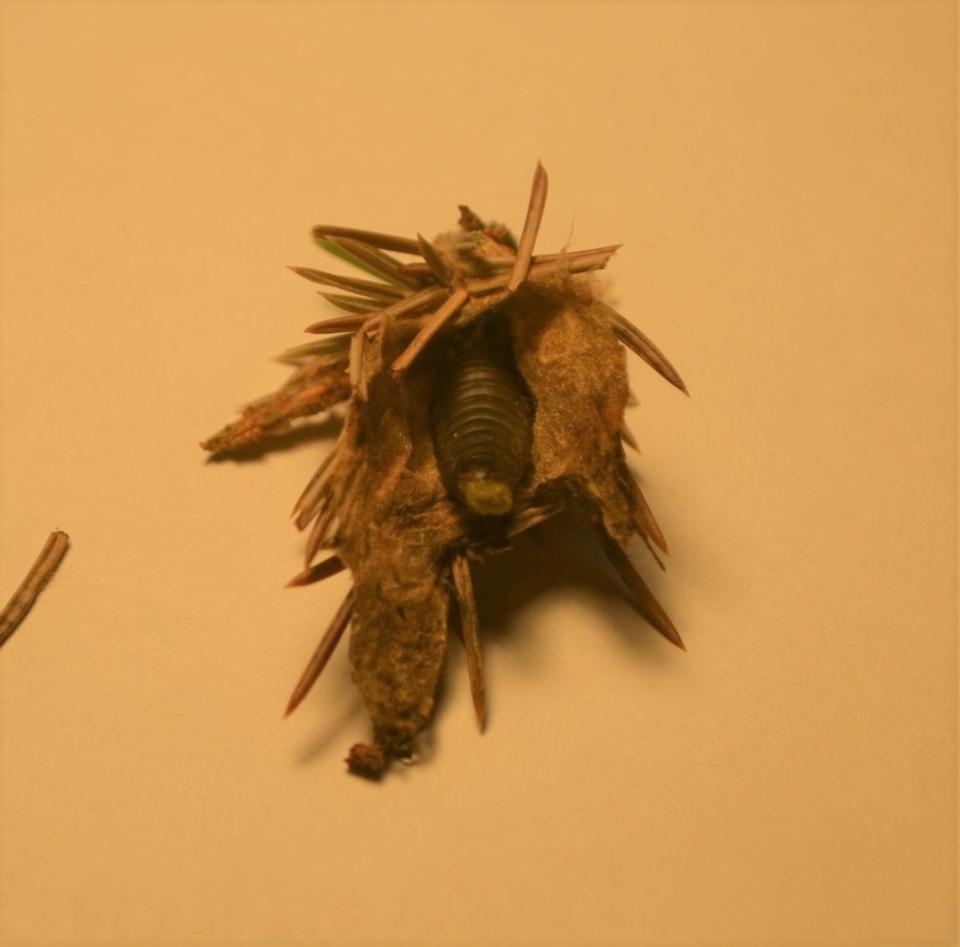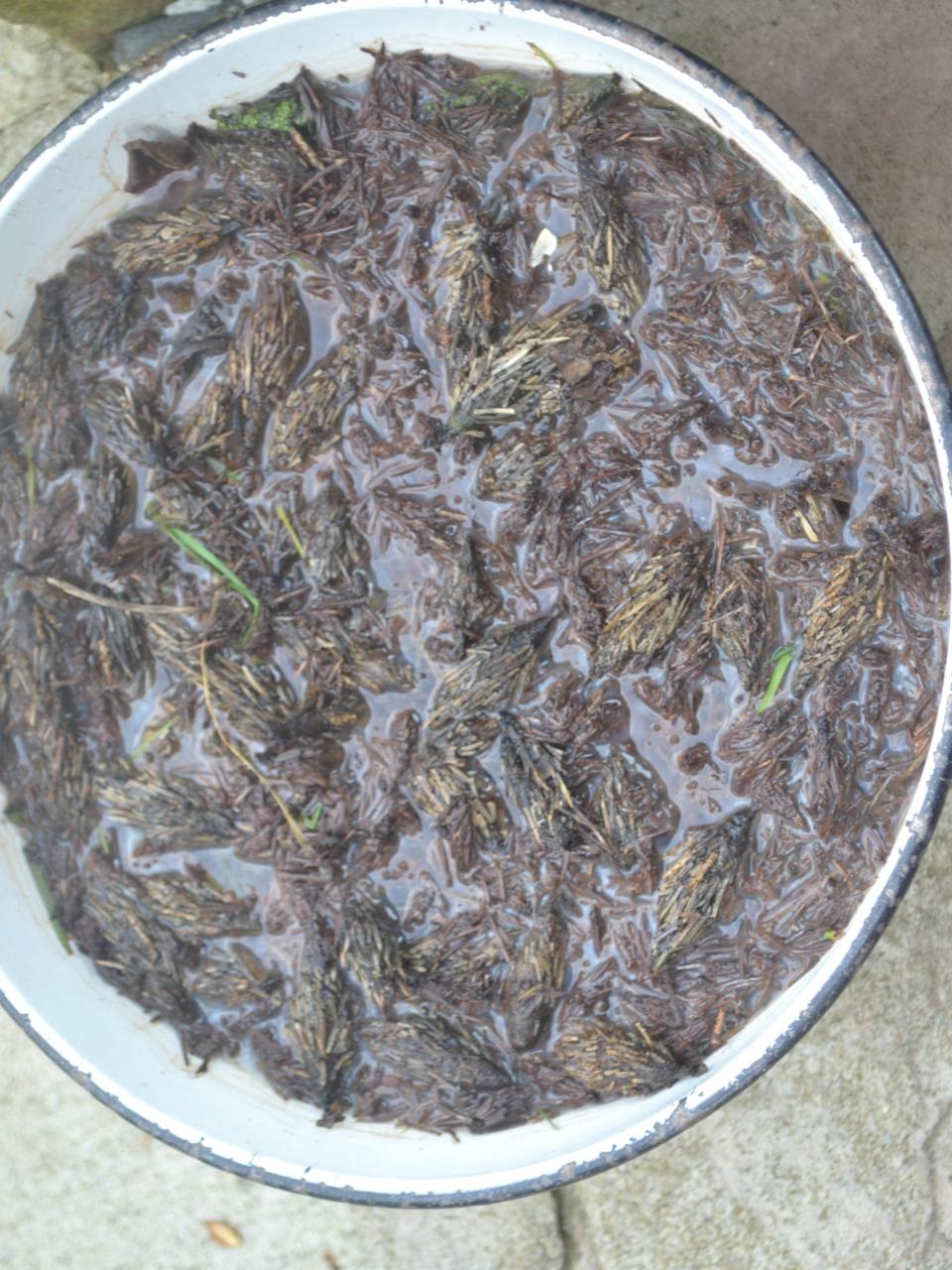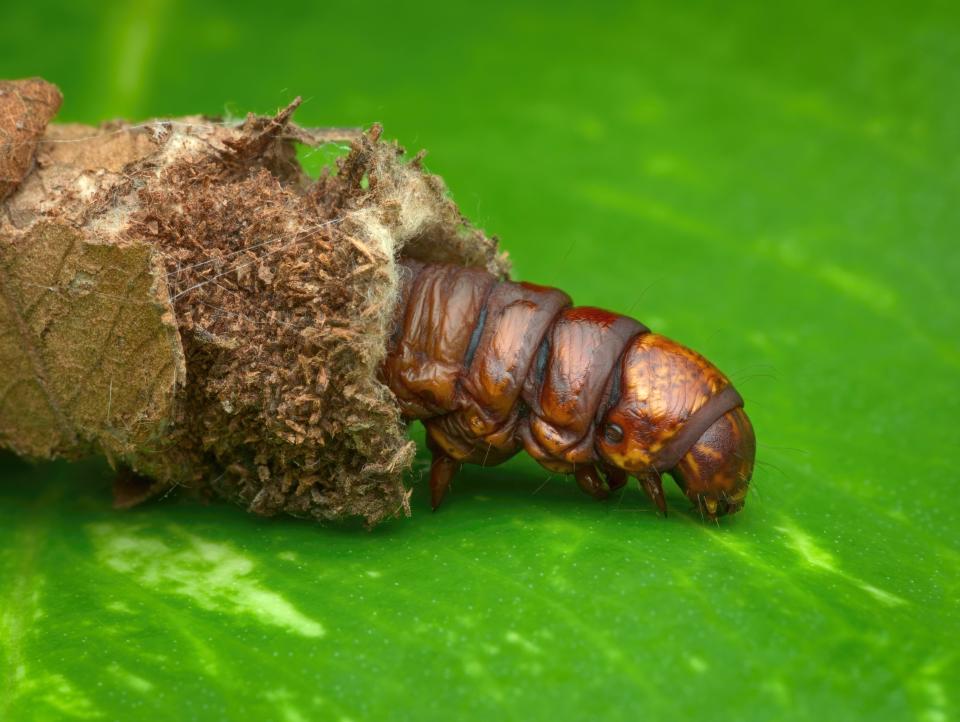A Stroll Through the Garden: Bagworm and how to control it
A friend of mine from the pool who was rehabbing a broken arm gave me a call a few weeks ago about these little pinecones on her arborvitae. I said okay, I would like to see this issue. She invited me out but, between her appointments and my crazy schedule, it was going to be hard to make it. We talked for some time in the pool as we exercised.
It seems that her evergreen trees have a pest that is common at least this year among spruce trees and 130 other plants. When you first look at these cocoons, you may think that you are looking at a small branch with a swelling problem or a pinecone.
My reader has a lot of spruces that she cares for and saw many of these cocoons. Initially, I would recommend that you use a knockdown organic insecticide to remove as many as you can to start. You can always gather them by hand. My reader’s husband has picked and filled this wash basin several times, and he has found most of them and picked them off the trees. The arborvitae was so infested with this insect that he removed the arb.

Bagworm or Thyridopteryx ephemeraeformis is a clear wing moth that spins its cocoon with bits and pieces of plant material that help the cocoon look like a branch on the tree. Each case grows from 1.5 to 2 inches. The caterpillars start out black and turn brown. Males look a lot like bees with black furry bodies and clear wings. Females look like maggots, have yellowish-white soft bodies, no mouth parts, no legs, no antennae, no eyes and have tufts of hair near the end of the body and stay inside the cocoon.
When fertilized, the female lays 1,000 eggs. Eggs are cream-colored and tiny. Ichneumonid wasps use this caterpillar to help hatch its babies that are laid on the caterpillar’s body. Woodpeckers, sapsuckers, hornets and vespid wasps eat these insects for their meals. You can find the unusual relatives of Ichneumonid wasps in catalogues as predatory insect helpers. Drop me an email and I’ll help you in your search.
Each bagworm here in Ohio will go through its life cycle in two years. The eggs and caterpillars share the cocoon. One good thing I can tell you about the bagworm’s life cycle is that you only have one set of eggs per year. Caterpillars start their work after they hatch and break their dormancy in late spring. These caterpillars begin constructing their case immediately, starting out on the surface of the leaf and gradually migrating to the bottom of the leaf and even further and the bag gets even larger.
As these little caterpillars feed on the leaves, their habits are like leaf miners. This stage of the insect’s life cycle is the most damaging to the tree and can skeletonize the leaves in near proximity to the caterpillar. There are other levels of infestation where you may find what looks like dunce caps in the plants this insect is skeletonizing. With large infestations the trees can truly suffer.
In late summer the caterpillars enter their dormancy in the cocoon. The reproduction of the adult male and females occur in August through September during normal years, which means that the mating and egg-laying happen during this month.

During drought years things can change. My reader is doing the right thing about getting rid of as many of these cocoons as he can now. Because this insect has a two-year life cycle and reuses the cocoons, by destroying most of the cocoons you should be able to get rid of the insect for the most part. Remember though that one female can lay 1,000 eggs.
One of the first controls for this insect pest is removing the bag by hand and dispatching them in some way, which means no problems next year from this pest. This may be a little harder to do than you may think. Phermones can attract these moths and control them if you bring them with the idea of controlling them. A variety of insecticides can be used but just after the eggs hatch and the caterpillar hatch.
One of my favorite natural controls is Bt or Bacillus thurengensis or Dipel. Sevin can also be used to control this moth if applied early in the season from late May to early July before they get large. Permethrin or Eight, bifenthrin, and cyfluthrin can also be used to control this insect if applied early in the season on the caterpillar, which may have challenges.
Organic oils may also be used such as clove oil, cinnamon oil and others with success. As the females hatch from their cocoons, they have no mouth parts, which makes it difficult for the oil to enter their bodies. But with this oil sprayed over them, they may have a harder time surviving. Spinosad and Neem oil can also be used to control these insects at the correct time.

Spinosad is a broad-spectrum insecticide that may cause more damage than you want. August applications of these chemicals become ineffective. Be careful if you spray inside the trees because the canopies and leaves can be dense and block the spray from reaching the interior bagworms. I would also think that a good coating of Tangle Foot 6 inches above ground level would control many of the caterpillars earlier in the year.
My reader did a great job in clearing out most of the bagworm by hand, but he needs to inspect the spruce tree inside the spruce tree. You will need to go over the spruces one more time to get all of them by hand.

Have a nice stroll in your garden this week. If you have some questions from things going on in your garden, do not hesitate in e-mailing me at ericlarson546@yahoo.com. Thank you for all of your questions.
Eric Larson of Jeromesville is a veteran landscaper and gardening enthusiast and a founding board member of the Ohio Chapter of Association of Professional Landscape Designers.
This article originally appeared on Mansfield News Journal: Bagworms and how to control them before they kill your tree

